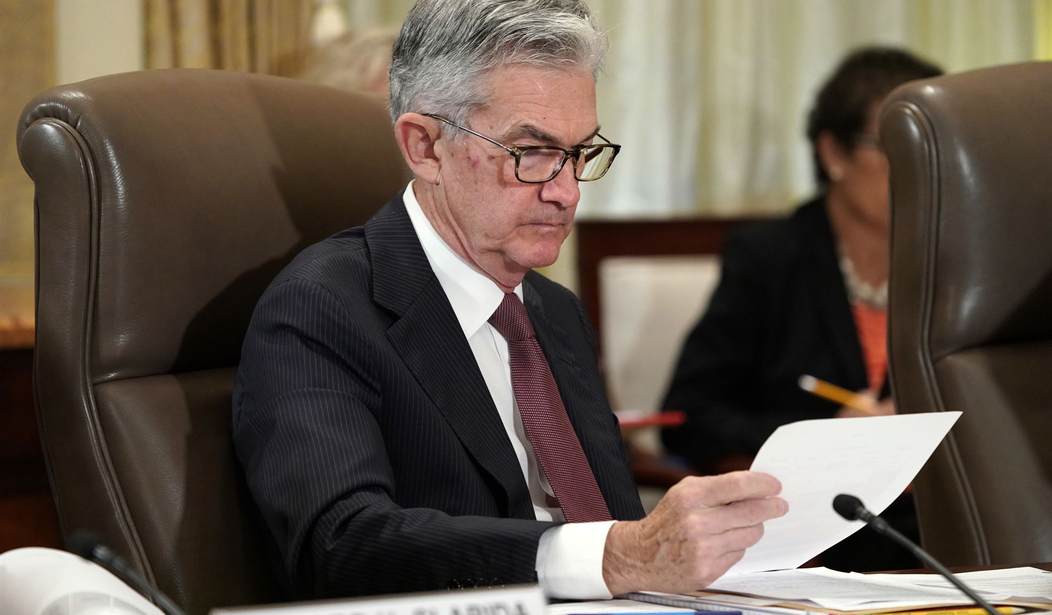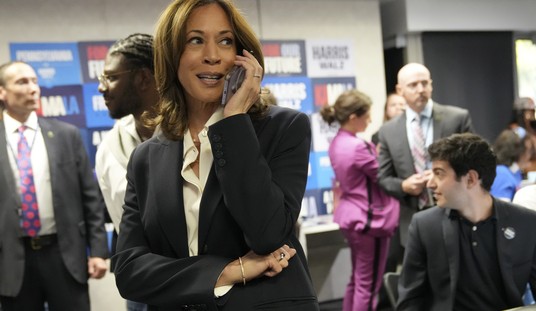Over the weekend, the United States Congress debated a coronavirus stimulus bill. Then it was rejected yesterday, sending equity future spiraling.
Democrats are worried Wall Street and Big Business will be given a blank check. Then Democrats and the media lamented over how the crashing stock market was destroying Main Street pensions, even folks that told Americans for three years how record stock market gains meant nothing to Main Street or everyday workers.
Obviously, they were lying and obviously lawmakers were playing politics yesterday.
I have said for weeks any rescue package must focus on Main Street, small business and folks in things like the gig economy. There is no doubt past bailouts were all about banks and corporations and hedge fund managers. Of course, those challenges were centered around the investing system run amok to create profits from extraordinary risk leaving the biggest names in the financial system vulnerable.
The same folks that preach the importance of failure, and cheer Schumpeter, got fat bailouts and soon it was business as usual. Globalists say there was no other way and the pain would have been too unbearable for Main Street. I get the resentment toward bailing out big corporations and banks, but there is no time to quibble socially from the same folks that passed one of the biggest pieces of legislation and told Americans they could read the bill later.
On that note, I’m sure the $1.8 trillion isn’t enough, but it’s a start. If there was going to be a holdup, it should have been to make the package larger rather than focusing on how much businesses would get. Concerned lawmakers should have demanded more for Main Street. They are back at the drawing board and this time they must deliver. I know it’s a free-for-all in those rooms, and everyone is asking for money, even industries and businesses that were busted long before the coronavirus bug showed up.
Recommended
Treasury Secretary Mnuchin thinks Congress will get its act together today.
This would be amazing, especially for small business (500 employees or less), which would receive funds from the government to keep workers and rehire workers. Mnuchin says these loans will go to the smallest business, including retail Mall-based names that were already in a world of hurt.
Of course, both parties will come to the aid of big business, but some understand they better write monster checks to small business before coming to the aide of companies like Boeing (BA).
Powell Steps Up Big Time
Release from Federal Reserve
The Federal Reserve is committed to using its full range of tools to support households, businesses, and the U.S. economy overall in this challenging time. The coronavirus pandemic is causing tremendous hardship across the United States and around the world.
Our nation's first priority is to care for those afflicted and to limit the further spread of the virus. While great uncertainty remains, it has become clear that our economy will face severe disruptions. Aggressive efforts must be taken across the public and private sectors to limit the losses to jobs and incomes and to promote a swift recovery once the disruptions abate.
The Federal Reserve's role is guided by its mandate from Congress to promote maximum employment and stable prices, along with its responsibilities to promote the stability of the financial system. In support of these goals, the Federal Reserve is using its full range of authorities to provide powerful support for the flow of credit to American families and businesses. These actions include:
- Support for critical market functioning. The Federal Open Market Committee (FOMC) will purchase Treasury securities and agency mortgage-backed securities in the amounts needed to support smooth market functioning and effective transmission of monetary policy to broader financial conditions and the economy. The FOMC had previously announced it would purchase at least $500 billion of Treasury securities and at least $200 billion of mortgage-backed securities. In addition, the FOMC will include purchases of agency commercial mortgage-backed securities in its agency mortgage-backed security purchases.
- Supporting the flow of credit to employers, consumers, and businesses by establishing new programs that, taken together, will provide up to $300 billion in new financing. The Department of the Treasury, using the Exchange Stabilization Fund (ESF), will provide $30 billion in equity to these facilities.
- Establishment of two facilities to support credit to large employers – the Primary Market Corporate Credit Facility (PMCCF) for new bond and loan issuance and the Secondary Market Corporate Credit Facility (SMCCF) to provide liquidity for outstanding corporate bonds.
- Establishment of a third facility, the Term Asset-Backed Securities Loan Facility (TALF), to support the flow of credit to consumers and businesses. The TALF will enable the issuance of asset-backed securities (ABS) backed by student loans, auto loans, credit card loans, loans guaranteed by the Small Business Administration (SBA), and certain other assets.
- Facilitating the flow of credit to municipalities by expanding the Money Market Mutual Fund Liquidity Facility (MMLF) to include a wider range of securities, including municipal variable rate demand notes (VRDNs) and bank certificates of deposit.
- Facilitating the flow of credit to municipalities by expanding the Commercial Paper Funding Facility (CPFF) to include high-quality, tax-exempt commercial paper as eligible securities. In addition, the pricing of the facility has been reduced.
In addition to the steps above, the Federal Reserve expects to announce soon the establishment of a Main Street Business Lending Program to support lending to eligible small-and-medium sized businesses, complementing efforts by the SBA.
The PMCCF will allow companies access to credit so that they are better able to maintain business operations and capacity during the period of dislocations related to the pandemic. This facility is open to investment grade companies and will provide bridge financing of four years. Borrowers may elect to defer interest and principal payments during the first six months of the loan, extendable at the Federal Reserve's discretion, in order to have additional cash on hand that can be used to pay employees and suppliers. The Federal Reserve will finance a special purpose vehicle (SPV) to make loans from the PMCCF to companies.
The Treasury, using the ESF, will make an equity investment in the SPV.
The SMCCF will purchase in the secondary market corporate bonds issued by investment grade U.S. companies and U.S.-listed exchange-traded funds whose investment objective is to provide broad exposure to the market for U.S. investment grade corporate bonds. Treasury, using the ESF, will make an equity investment in the SPV established by the Federal Reserve for this facility.
Under the TALF, the Federal Reserve will lend on a non-recourse basis to holders of certain AAA-rated ABS backed by newly and recently originated consumer and small business loans. The Federal Reserve will lend an amount equal to the market value of the ABS less a haircut and will be secured at all times by the ABS. Treasury, using the ESF, will also make an equity investment in the SPV established by the Federal Reserve for this facility. The TALF, PMCCF and SMCCF are established by the Federal Reserve under the authority of Section 13(3) of the Federal Reserve Act, with approval of the Treasury Secretary.
These actions augment the measures taken by the Federal Reserve over the past week to support the flow of credit to households and businesses.
These include:
- The establishment of the CPFF, the MMLF, and the Primary Dealer Credit Facility;
- The expansion of central bank liquidity swap lines;
- Steps to enhance the availability and ease terms for borrowing at the discount window;
- The elimination of reserve requirements;
- Guidance encouraging banks to be flexible with customers experiencing financial challenges related to the coronavirus and to utilize their liquidity and capital buffers in doing so;
- Statements encouraging the use of daylight credit at the Federal Reserve.
Taken together, these actions will provide support to a wide range of markets and institutions, thereby supporting the flow of credit in the economy.
The Federal Reserve will continue to use it full range of tools to support the flow of credit to households and businesses and thereby promote its maximum employment and price stability goals.
Bottom Line
I knew the Fed would step up and still think they have more tricks up their sleeve. I have always said, and wrote to subscribers, there was no limit to their creativity, which began in 1961 with Operation Twist. I salute Powell who had made a mess of the job; he and his colleagues are stepping up big time now.
What to buy?
We are going with two new ideas this morning. Ideally investors want to scale into the market over the next couple of weeks, by the same token, individual names will put in bottoms long before boarder indices. If you are not a current subscriber to our Hotline service, call your account representative or email research@wstreet.com.
Portfolio Approach

We are increasing Consumer Discretionary and Technology to a 4 weight and lowering Cash to 4 (20%).
Today’s Session
There has been less volatility overnight, and equity futures have been higher for most of the morning, but there’s still a sense anything can happen at any time during the session.
Technical View
The S&P 500 is locked into the perfect downward spiral with a very ridged channel that continues to resistance hold, and new lows created. This pattern must be reversed to gain any traction to an upside move.
Right now, key support is 2,367, which must hold, or we tumble to the bottom of the channel. The first big upside test is 2,562.


























Join the conversation as a VIP Member